Learn the Basics of Growing Basil
These tricks will help you reduce disease and increase the harvest
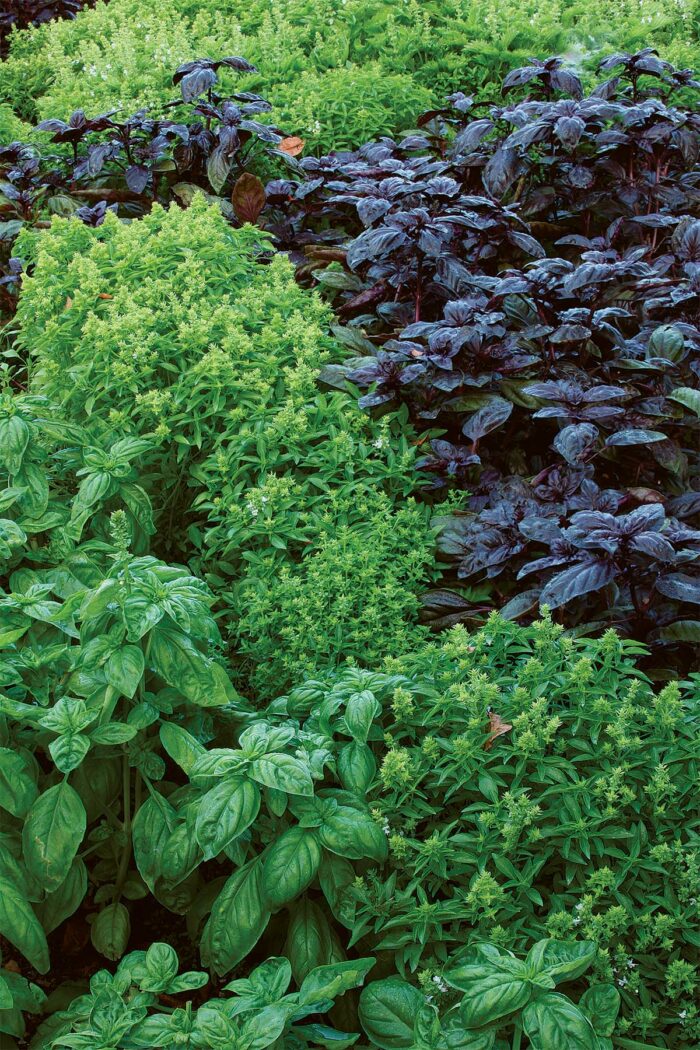
There’s a reason that even those who don’t have a vegetable garden still try to grow basil: because it’s delicious and almost as versatile in the landscape as it is in the kitchen. Gardeners have long been enamored with basil, appreciating its many attributes, including its ability to enhance flower beds, attract pollinators, and provide ubiquitous aromatherapy in pots on the terrace. A luscious herb irreplaceable to the cook, basil is the thing foodies say no tomato should be eaten without. This tricky herb, however, does require certain conditions to thrive. It also needs some specific attention through the season to prevent disease and to keep the plants from flowering too soon and becoming unproductive. Basil doesn’t have to be a gamble, though, if you thoughtfully select the best type to fit your needs and give it the right care.
Select varieties for looks and flavor
Basil comes in an array of flavors, colors, shapes, and sizes. In order to cultivate a productive harvest or ornamental companion, pay close attention to the variety you are planting and the care that variety needs to ensure success. There are four basic types of basil: sweet basils, small-leaved/dwarf basils, purple-leaved basil, and basils with specially scented leaves.
Sweet basils are the tender large-leaved varieties such as ‘Genovese’ and ‘Napoletano’. Staples in Italian cooking, these are the aromatic and flavor-packed pesto makers. They are slower to bolt than other types of basil and range in size from 16 to 24 inches tall and wide. Small-leaved basils, on the other hand, are well-behaved dwarf plants that generally stay under a foot tall and wide. While they are the quickest to flower, their neat, compact habit looks as good forming an edge around the tomato bed as it does softening the rim of a container planting. Small-leaved basils are spicy with notes of anise and clove, and you can harvest entire branches of the plants and strip off the tiny leaves to sprinkle on hors d’oeuvres and salads.
Purple basils are generally thought to be less culinary than sweet basils, but they provide a long season of beauty. They are usually in the same size range as sweet basils. Fragrant, scented-leaved basils entice us with an extra flavor dimension of lemon, lime, or cinnamon. And trust me, we all scream for lime-basil ice cream in my family. You can sow the seeds of these basils as thickly as you would microgreens. Then simply thin and eat the pluckings, making space for the 20-inch-tall and -wide plants.
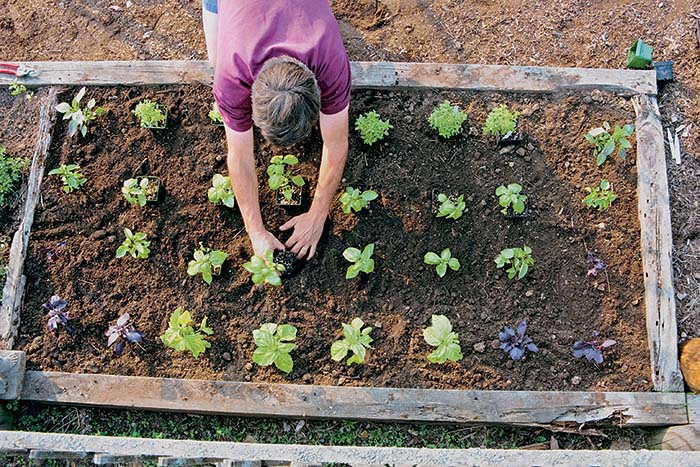
Give plants warm temperatures and rich soil
Basil hails from warm climates, so timing is everything. One brush with temperatures below 50°F (plants actually prefer temps above 60°F and take off at 80°F) will stunt plants’ growth, if not completely end their growing season. Once weakened, plants become more susceptible to pests and disease, struggling all season long. Starting basil seeds indoors under lights or in a greenhouse provides the optimum conditions for sprouting. Germination in a soilless mix of peat, vermiculite, and perlite is quick—just six days for most varieties. Aim for 64°F to 75°F soil (use a heat mat if you need to).
Transplant your strongly rooted 7- to 8-week-old plants into the garden after the last frost date. I like to pinch the central growth tip of the young plants (which should be about 5 inches tall) down to two sets of leaves after planting. This promotes a bushier, stronger plant. There’s no rush moving plants outdoors. I wait until the second week in June in my Zone 5b/6 garden to avoid the cool, wet spring weather.
Basil needs fertile, well-drained soil in a warm, protected spot. It’s not drought tolerant and can be damaged by heat stress. If you plant basil in a windy spot that dries out quickly, it would do best with a bit of shade in the afternoon. Keep soil moisture consistent. Flagging from drought and then being deluged with water stresses plants, which can lead to disease. Mulch helps to maintain even moisture, but wait until the soil has warmed to 70°F before laying it to avoid accidentally encouraging fungal problems.
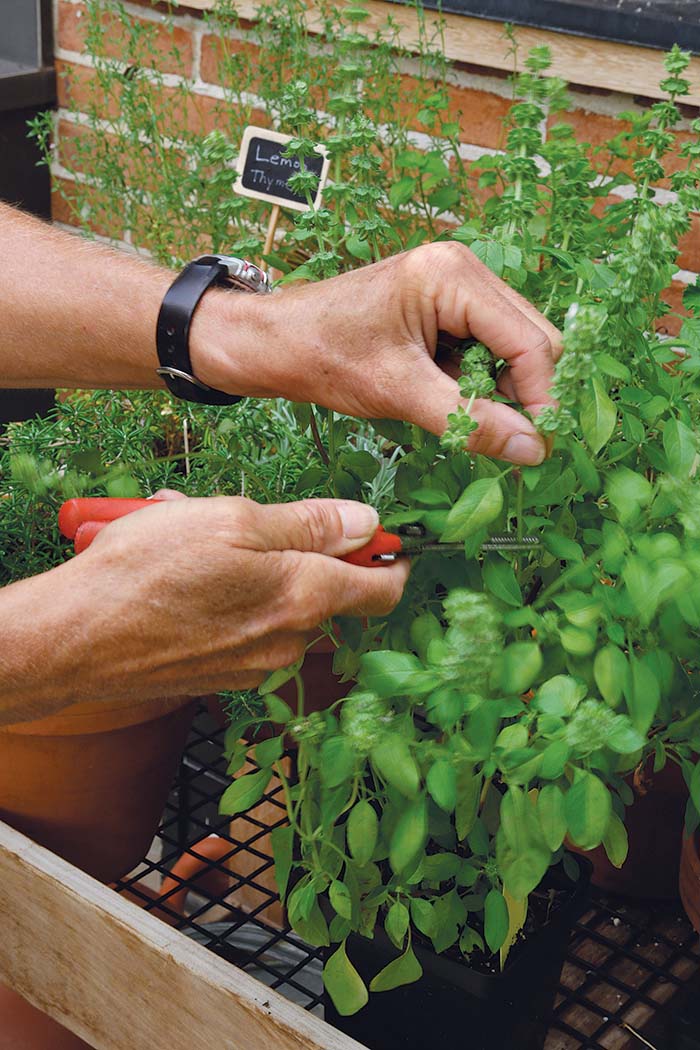
Good circulation and proper pinching keeps them healthy
Location and spacing are equally as important as timing. Individual basil plants should be allowed at least a square foot of bed space, which allows air to circulate freely around all sides. High humidity and overwatering are the enemies of basil. Avoiding overhead watering (which promotes fungal disease) and rotating your basil crop each year (rather than repeatedly planting it in the same spot and reintroducing soil-borne disease) will increase your growing success. Given a bit of thoughtful care, basil rewards you with vigorous plants all summer.
Keep basil productive by removing the flowers at the bud stage. Blossoms deplete the plant’s energy, which reduces leaf production. Since the leaves are what you’re most interested in, removing buds is critical. Harvest individual stems of basil by counting two to three leaf nodes down the stem and pinching the center stalk right above a set of leaves. This encourages the plant to regrow, which basil does quickly. Using a pair of snips allows for easy harvesting; basils are a true cut-and-come-again herb. Stand stems at room temperature in a glass of water until you’re ready to use them.
There’s no reason to shy away from basil once you’re familiar with the ins and outs of this interesting crop. In fact, after mastering its quirks, you might find you have more basil than you ever dreamed possible.
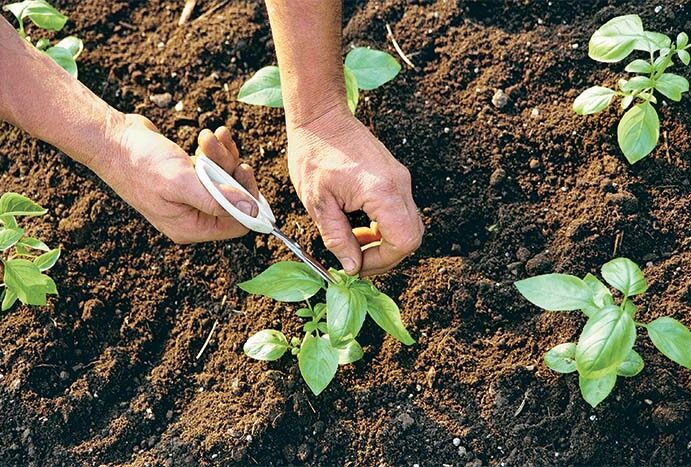
Varieties
An array of basils that can’t be beat
Whether you’re growing basil for the best flavor possible or looking to add a little pow to the beauty of the veggie patch, there’s a variety that’s just right for you.
Cinnamon
Pretty enough to grow with ornamentals, ‘Cinnamon’ basil has dark purple bracts and stems, shiny green leaves, and deep pink flowers. The succulent, cinnamon-flavored leaves have a particularly strong flavor and are occasionally used in stir-fries and in vinegar. Although it may not be used a lot in culinary pursuits, ‘Cinnamon’ basil is a standout as a mosquito repellent. At the Chicago Botanic Garden, we find it has poorer germination, which can be improved by keeping seed trays moist but not too wet.
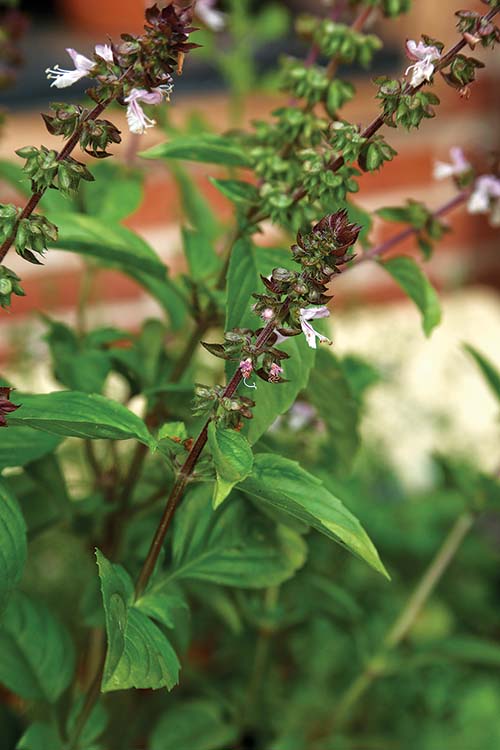
‘Minette’ dwarf basil
Dwarf basils are the definition of well-behaved landscape plants. ‘Minette’ is reminiscent of a clipped boxwood topiary and can form low uniform borders around beds. The compact 1-foot-tall and 8-inch-wide plants are also charming in pots. Though the leaves are tiny, they pack a spicier punch than larger-leaved sweet basil varieties. This plant blooms early, so snip off entire branches instead of harvesting individual leaves just before flowering begins in early summer.
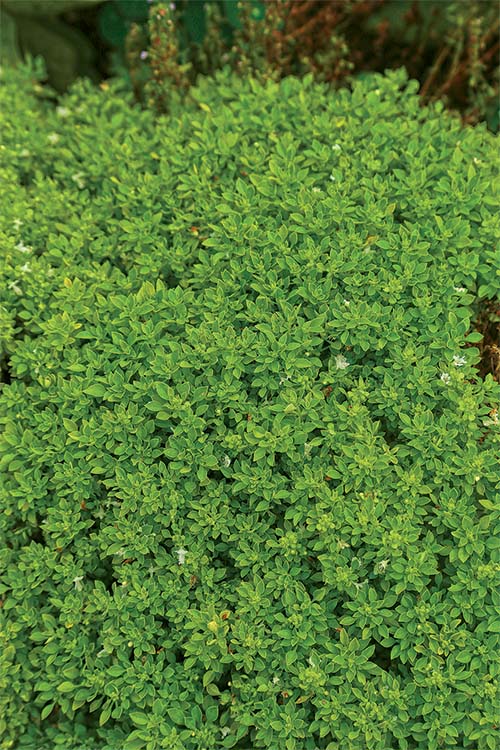
‘Lime’
A citrus-scented basil in a petite-statured plant, ‘Lime’ tops out at 20 inches tall and 12 inches wide. The leaves are smaller and cup upward as if to preserve their oils for brightening Thai dishes. ‘Lime’ basil has a straightforward flavor that enhances salsas, vegetable curries, herbal teas, and salad dressings, and it contributes a fresh twist to marinades for fish or chicken.
‘Siam Queen’ Thai basil
‘Siam Queen’ is an All-America Selections winner with narrow, shiny green leaves, purple stems, and fragrant plum flowers that make long-lasting additions to cut floral arrangements. The 12- to 16-inch-tall and -wide plants have a balanced proportion of flowers to foliage. Like all Thai basils, ‘Siam Queen’ has a pungent, sweet, slightly spicy flavor reminiscent of anise, licorice, and clove. Add a few bruised leaves to your next gin and tonic, and enjoy.
‘Cardinal’
This variety may be too gorgeous to eat with succulent green leaves on purple stems, plumes of plum flowers, and a spicy cinnamon scent. We’ll just call ‘Cardinal’ the ultimate ornamental edible—although it is great in stir-fry.
‘Lettuce Leaf’
As the name suggests, ‘Lettuce Leaf’ basil sports large, 6-inch-long leaves on robust plants. Given room, it grows to a height of 2 to 3 feet with a similar width—enough for a summer bounty of pesto. ‘Lettuce Leaf’ is a type of sweet basil that is slow to bolt, so you’ll be continually picking leaves before the white flowers appear.
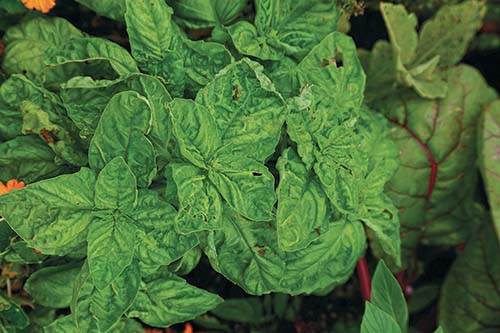
‘Dark Opal’
Most purple basils eventually revert to one of their parents and end up with mottled purple and green leaves by midseason. ‘Dark Opal’ is the only cultivar with pure purple foliage that lasts. Fragrant and attractive, it is best used fresh.
‘Pesto Perpetuo’
This is a beautiful, newer, nonflowering hybrid with variegated light green and fresh cream foliage and a shaggy columnar habit. Since it never bolts and keeps producing leaves all season long, you may end up with more pesto than you have an appetite for.
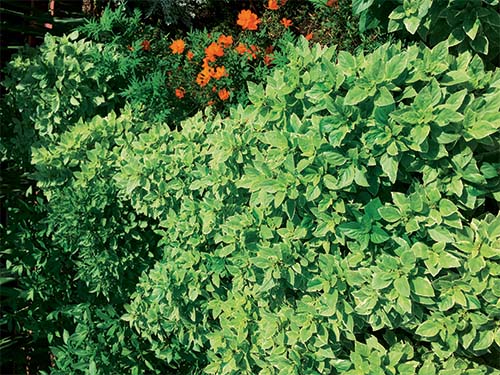
Basics
How to deal with diseases
There are two fairly common diseases to which basils are susceptible. Each has its own set of challenges when it comes to prevention.
Fusarium wilt is a soil-borne pathogen
This disease causes yellowing of the leaves; discolored, twisted stems; and stunted growth. Sometimes the first thing you’ll notice is that the leaves suddenly drop off the plant. Sweet basil varieties tend to be the most susceptible. Thankfully, work to develop basil cultivars relatively resistant to fusarium wilt has been done. The disease is passed along through contaminated seed, so look closely at seed packaging and buy only seeds that have been tested and certified as disease-free. Fusarium wilt overwinters in contaminated garden soil, making crop rotation your best defense and avoiding excessive watering a close second.
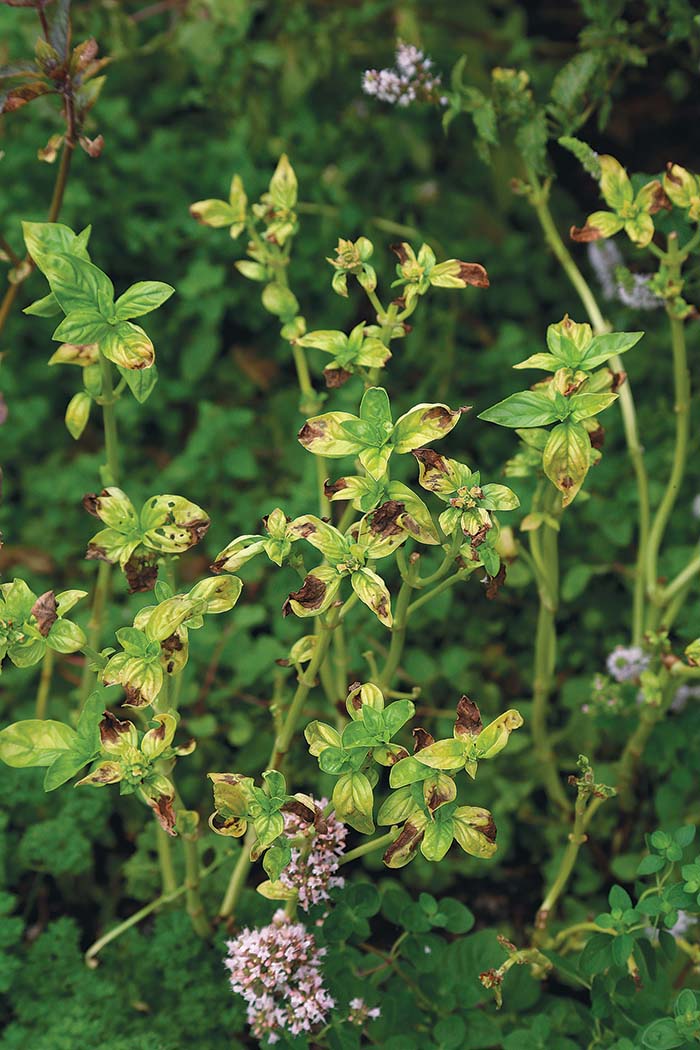
Downy mildew is the most current threat
Downy mildew on basil is recognizable by yellowing on the tops of leaves with pathogen growth and gray spores on the undersides of leaves. Plant breeders are busy developing new, resistant sweet basil varieties. There are very few products to combat this disease, which increases the importance of cultural management techniques. There may be some resistance to downy mildew in some varieties: ‘Red Leaf’, ‘Red Rubin’, Thai basil, ‘Lemon’, ‘Lime’, and ‘Cinnamon’. Once infected, the plants should be removed and thrown away. Try to source your seeds from a reliable nursery close to home. Buying local transplants helps shut down the disease cycle because the pathogen can be passed by importing plants and seeds from the South, where winters aren’t cold enough to kill it.

Lisa Hilgenberg is the horticulturist for the Regenstein Fruit and Vegetable Garden at the Chicago Botanic Garden in Glencoe, Illinois.
Photos, except where noted: Danielle Sherry; Robin Carlson/Chicago Botanic Garden; Karen Hadley; courtesy of Lisa Hilgenberg
Sources
Botanical Interests, Broomfield, CO; 877-821-4340; botanicalinterests.com
Johnny’s Selected Seeds, Winslow, ME; 877-564-6697; johnnyseeds.com
Park Seed Co., Hodges, SC; 800-845-3369; parkseed.com
W. Atlee Burpee & Co., Warminster, PA; 800-888-1447; burpee.com
Fine Gardening Recommended Products

Razor-Back Potato/Refuse Hook
Fine Gardening receives a commission for items purchased through links on this site, including Amazon Associates and other affiliate advertising programs.

A.M. Leonard Deluxe Soil Knife & Leather Sheath Combo
Fine Gardening receives a commission for items purchased through links on this site, including Amazon Associates and other affiliate advertising programs.

Chapin International 10509 Upside-Down Trigger Sprayer
Fine Gardening receives a commission for items purchased through links on this site, including Amazon Associates and other affiliate advertising programs.


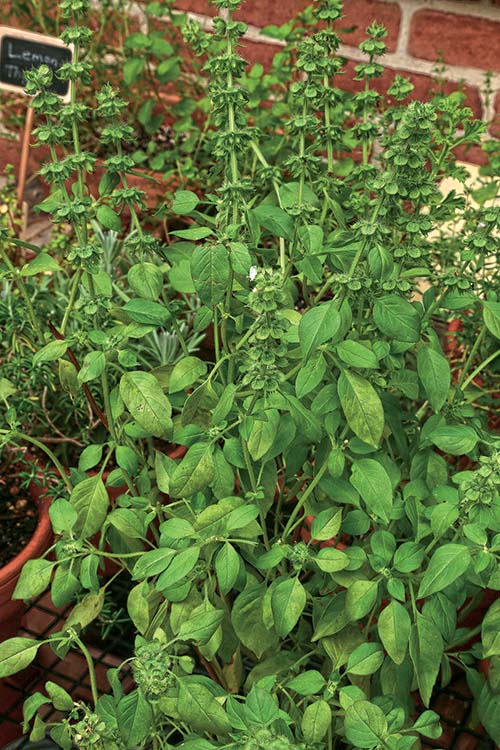
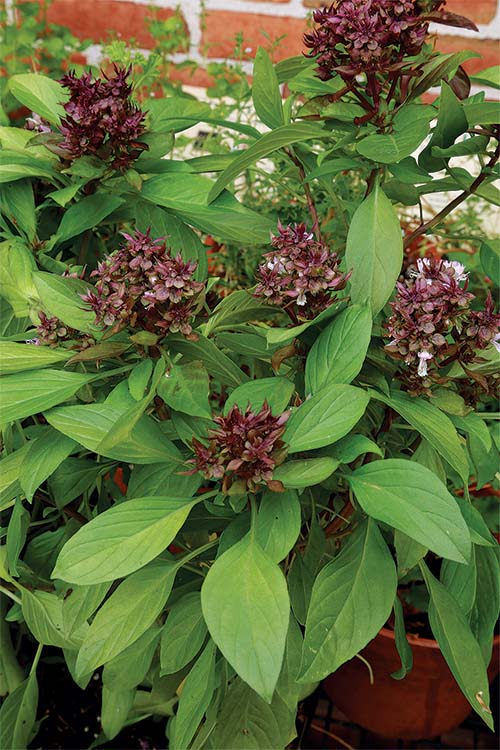
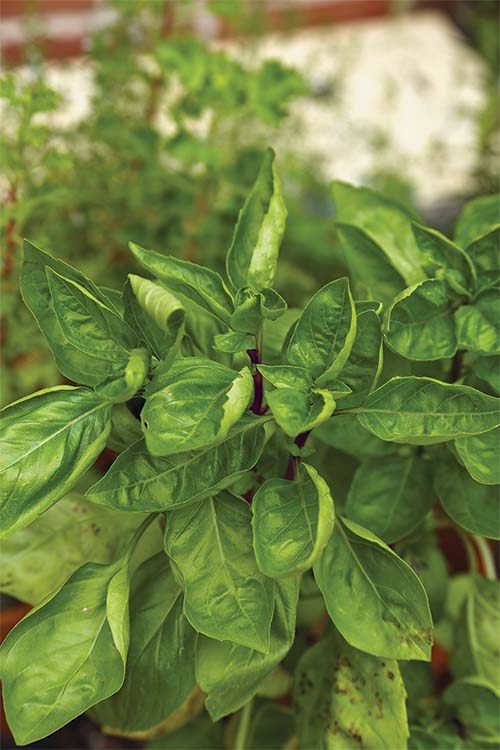





Comments
Log in or create an account to post a comment.
Sign up Log in